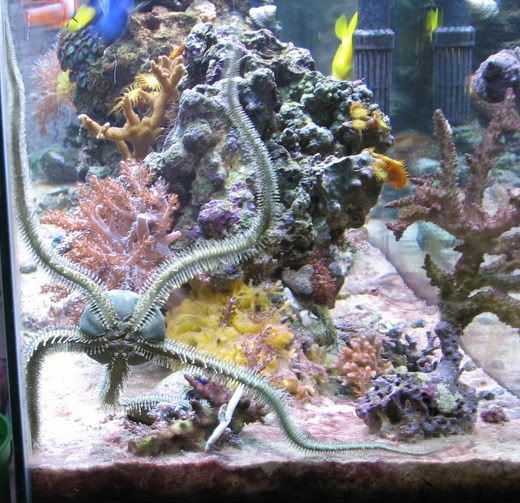THere is NO biological distinction whatsoever between brittlestar and serpentstar. No behavior can be determined based on this I"m afraid. They are two common names for the same animal. THis distinction is only made in this hobby, yet the same species can be classified by different people as both. Meaning - it is meaningless. It depends on how the spines are held at that time. The scientific name is "Ophiuroid" whicn means snake or serpent like. The common name "brittlestar" refers to their ability to autonomize, or drop arms. This occurs in all members of the class Ophiuroidea.
The green brittlestar is a known predator in the wild. But it is clear that it is an individual issue with the greens in captivity - some are real issues, in any tank, and some just don't appear to be the same.
Other brittlestars (remember - same as serpentstars) are not known to be as problematic but they WILL eat dead or dying animals long before you may know there is a problem. Often the are accused of wrongdoing based on this and yet ironically it is why we put them in the tank.
Also, they should be fed...don't expect them to starve to death. That being said anything probably has the potential to eat something that comes by. It is very very very unlikely they will catch a fish (again, except the green), but a possibility. The brittlestar shown in the link, Ophioderma appressum, does not get particularly large and I would not consider it a high risk.
The one that is tan with a dark center is Ophiolepis superba and also very low risk.
FWIW I have a 45 g tank with 3 very large green brittlestars, and about 7 other larger species, with a 6line and a cleaner shrimp. I can't accuse them of any wrongdoing. However the tank is fed heavily to keep the risk low.





